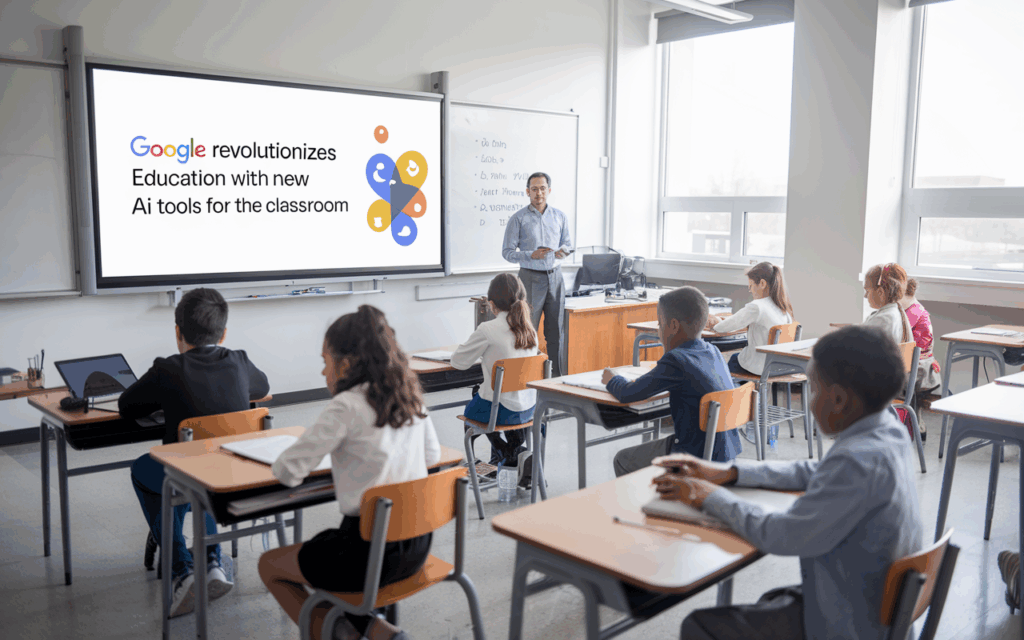Google Takes the Leap: Introducing AI Tools for the Classroom 🚀
In an exciting move for educators and students alike, Google has announced a suite of over 30 AI-powered tools designed to integrate seamlessly into the classroom. At the recent ISTE EdTech conference, the tech giant unveiled its latest offering: Gemini AI, alongside a range of interactive features to enhance the teaching and learning experience. 📚✨
A Major Shift in Education 🌍
With advancements in technology shaping how we learn, Google aims to streamline the educational process by embracing AI. Educators have felt the pressure of adapting to new tools that can sometimes feel overwhelming. With chatbots like ChatGPT becoming preferred helpers for students, it's essential for teachers to find ways to engage students meaningfully while incorporating these advancements.
Google believes its "responsible AI" approach can make learning more personalized, promoting an interactive experience that complements traditional methods. As students increasingly turn to AI for answers, the introduction of these new tools could encourage a more structured and beneficial use of such technology in classrooms.
What’s New? 🌟
The heart of this update is the Gemini AI suite, which is now available for free to all Google Workspace for Education accounts. Notable features include:
- Custom Lesson Plans: Teachers can generate tailored lesson plans and brainstorming ideas, making it easier to engage diverse learners.
- Interactive Study Guides: Using the AI research tool Notebook LM, teachers can curate dynamic study guides aligned with classroom materials.
- AI-Driven Support: A new feature called "Gems" enables teachers to create AI experts that provide real-time assistance to students struggling with homework.
Google also aims to expand its collaborative video creation app, Google Vids, giving educators and students tools to make instructional videos or book reports with ease. This will empower students to present their learning creatively and effectively. 🎥📝
Embracing Innovation in Classroom Management 📊
Moreover, various analytics tools will help track student engagement and performance, allowing for informed adjustments to teaching strategies. With an emphasis on keeping kids focused, the new "Class Tools" feature enables teachers to share resources directly on student screens while limiting distractions.
Challenges and Responsibilities ⚖️
Despite the enthusiastic reception, the introduction of AI in educational settings raises questions about academic integrity and reliance on technology. Educators are currently navigating concerns regarding plagiarism detection for AI-produced content and figuring out the balance between leveraging technology and maintaining the essence of traditional teaching methods.
As technology continues to evolve, it will be imperative for schools to develop guidelines that empower educators while promoting ethical use of AI resources. Google's initiative could lead the way in pioneering a framework for responsible AI in education.
Conclusion: The Future of Learning 🌈
In conclusion, Google's commitment to bring AI into the educational landscape offers promising new avenues for engagement and learning. By providing personalized tools and resources, educators can enhance their teaching strategies and foster a generation of tech-savvy learners who are prepared for the future.
Let’s embrace the change and explore the endless possibilities that AI can bring to the classroom. Are you ready to dive into the AI-driven education revolution? 🌐💡
Feel free to share your thoughts about AI in education, and join the conversation! 💬
Hashtags: #EdTech #AIInEducation

More Stories
Meta’s AR Ambitions and AI Safety: Insights from the Equity Podcast
Insight Partners Data Breach: A Wake-Up Call for Cybersecurity Awareness
Lovable’s Ascendancy: Anton Osika at TechCrunch Disrupt 2025